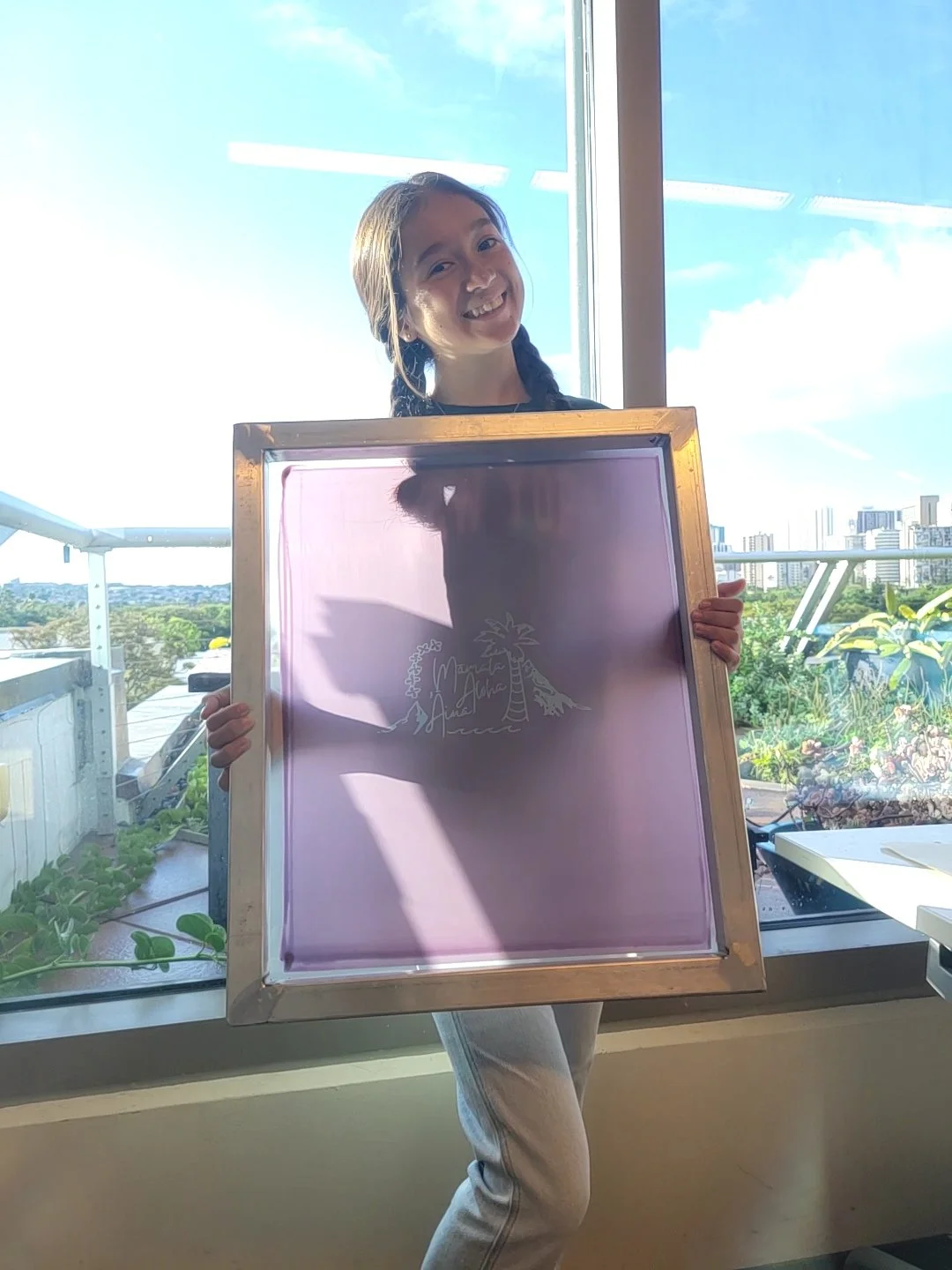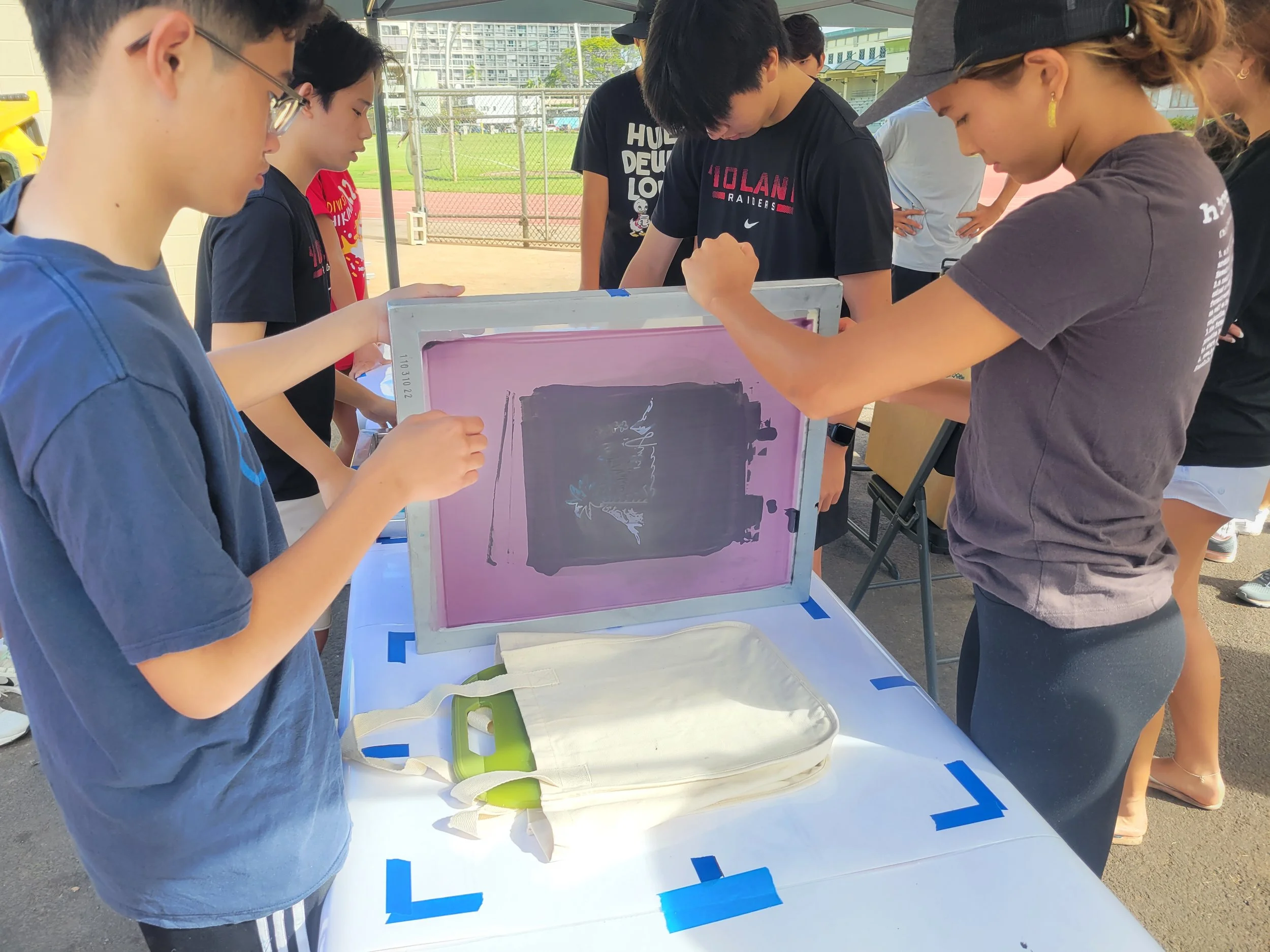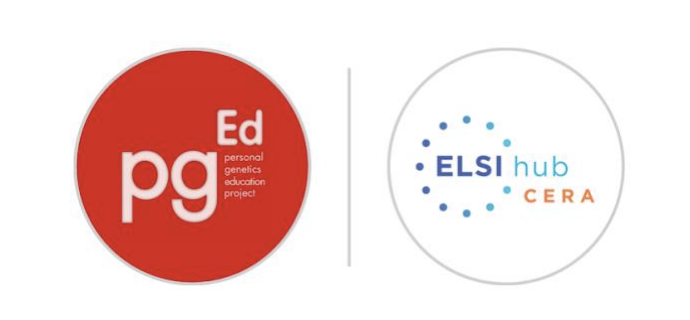Spring 2023
Māmala Aloha ‘Āina 2023
Each year in the month of April, ‘Iolani School partners with dozens of schools and organizations across the ahupua’a of Waikīkī to plan community events that focus on caring for and protecting our watershed. From trash cleanups to tree planting to storm drain marking, we gather to show our love for our home and learn what our waters need from us. “Māmala Aloha ‘Āina” became the name used to unify the separate schools’ events as given by our partners – the 8th grade students of Hālau Kū Māna under the guidance of their kumu, Trevor Atkins. The event name refers to the bay, “Māmala”, that connects the three valleys of Makiki, Mānoa, & Pālolo where our schools reside and unites us under one effort to improve the health of the bay by taking better care of the land and water that lead to it. “Aloha ‘Āina” refers to how we should act, in love, protection and life long learning from and about our home. This year we began to reflect on the name and how its acronym “MA‘A” also speaks to our practice of becoming familiar, accustomed to, and knowing thoroughly our natural places and their needs.
In conjunction with these Events, we launched a ‘Iolani student Design Contest for this year’s logo.
The winning design is used to promote our April cleanup events, as well as connect & celebrate our community of ‘āina & wai stewards. The chosen design is featured on websites, digitally printed on events posters, and screen printed on bags & shirts by community members during our event days. The winner of the 2023 Māmala Aloha ‘Āina Logo Design Contest is…
Jennifer Perkins ‘27 !!
““In my design I feature the quote Māmala Aloha ‘Āina to signify the importance of this event and meaning. I chose a cursive and bold font to give a natural and free-spirited energy to the message. The few ocean waves and a coconut/palm tree represent the Kai region of the ahupua’a, and the ocean that provides us with resources and activities. I added a lei of flowers in the corner to symbolize unity as one kuleana and the kula region, as the flowers are the first step to growing abundant fruit and medicine. In addition, I drew a mountain in the background to represent the Uka region as the mountains are the foundation of the ahupua’a and remind us all to stay grounded and centered. In conclusion, my one color green, reminds everyone to take care of the earth and land we are blessed with here in Hawaii, and to stay green!””
Jennifer’s design was chosen by a panel of students and faculty responsible for organizing the April stream clean-up events. Her design stood out for its intention in capturing a celebration of our place and envisioning a healthy & abundant ahupua‘a.
Students & Faculty who joined the Ala Wai Canal cleanup effort printing bags and shirts for other participants.
Visit the Nā Wai ‘Ekolu website here…for more information on Māmala Aloha ‘Āina events or joining the Nā Wai ‘Ekolu network of teachers and schools focused on developing curriculum and projects dedicated to monitoring the health of our streams & watershed.
*Special thanks goes out to One Shot Supplies in Waipahu for working with us to bring this student’s vision to life on silk screen which allowed us to spread the message far and wide!
WEBINAR: Exploring Difference in the Biology Classroom: Engaging with Genetic Disability and Difference
THURSDAY, MARCH 8TH (6:00-7:30 PM EST)
In this session, two leading disability scholars, Dr. Kara Ayers and Dr. Joel Reynolds, will provide an introduction to the evolution of disability language, discuss current trends, share insights from their work in clinical settings, and identify practices that can support inclusive education and engagement around disability and difference. The program will focus on evidence-based, pedagogical approaches that affirm the dignity, humanity, and agency of disabled and neurodiverse people and support them to learn, grow, and flourish. This session will include:
An introduction to disability and how it shapes the ways that people experience and navigate the world
Terminology and best practices for talking about disability, neurodiversity, and other forms of difference
Ample time for Q&A with the panelists
Audience: Open to everyone. Geared especially for middle school, high school, undergraduate biology educators








